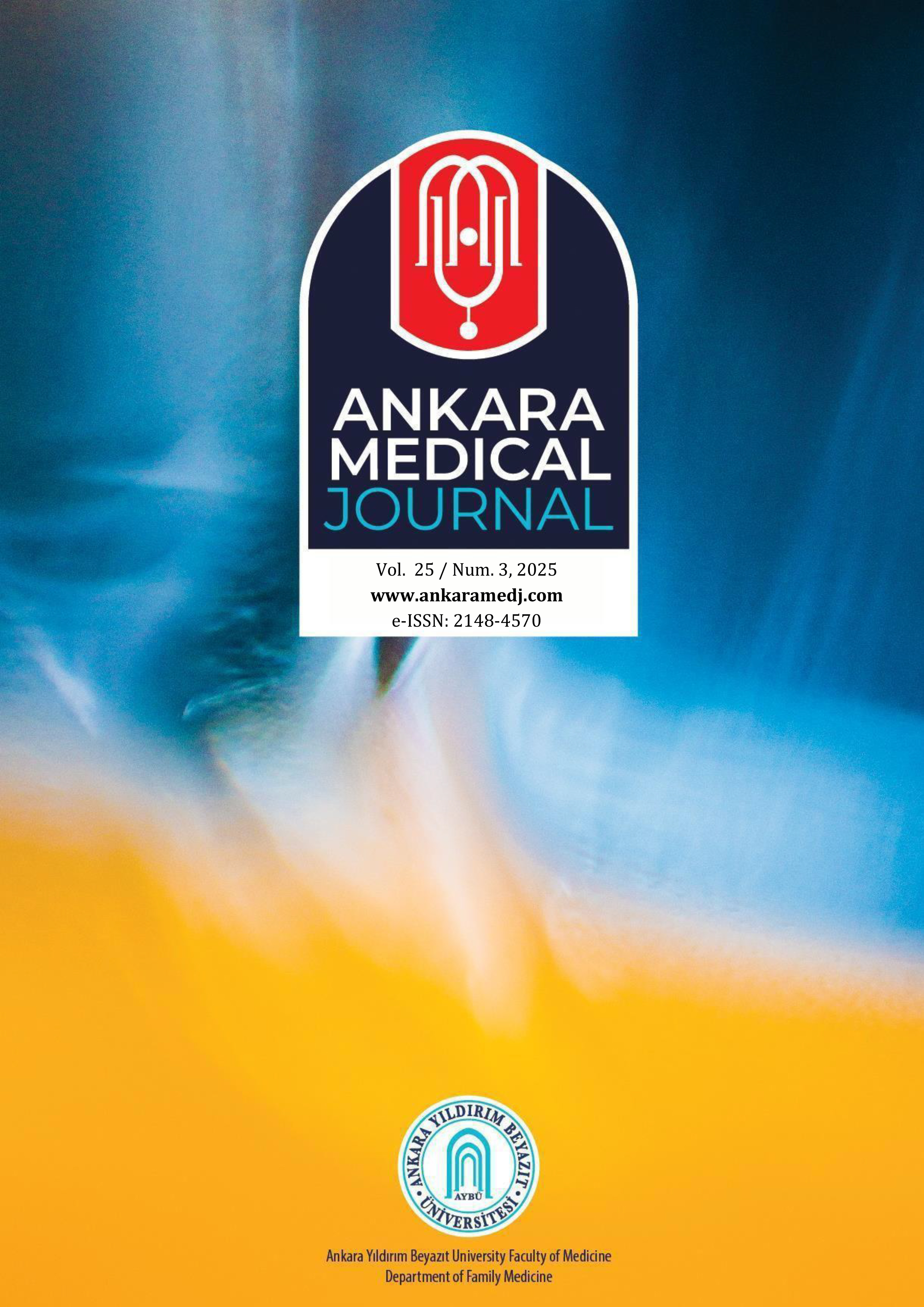Relationship Between Nutritional Status, Sarcopenia, Malnutrition and Appetite in Community-Dwelling Elderly
Rahime Evra Karakaya, Emine ElibolDepartment of Nutrition and Dietetics, Ankara Yıldırım Beyazıt University Faculty of Health Sciences, Ankara, TürkiyeINTRODUCTION: This study aims to examine the relationship between nutritional status, sarcopenia, and malnutrition in community-dwelling elderly.
METHODS: In the study conducted with 198 elderly, the Mini Nutritional Assessment (MNA) and Short Nutritional Assessment Questionnaire 65+ (SNAQ65+) screening tools were used to determine the risk of malnutrition. The SARC-F screening tool was used to identify the risk of sarcopenia. The 24-hour dietary recalls of the individuals were taken by the researcher.
RESULTS: According to MNA 30.3% and according to SNAQ65+ 23.7 (%) of elderly individuals are at risk of malnutrition and 44.4% are at risk of sarcopenia. Females have lower MNA scores than males (p=0.036) and higher SARC-F scores (p<0.001). Elderly individuals who reported that dental problems prevent them from consuming solid foods are 2.881 times more likely to be at risk of malnutrition compared to those who did not report such problems (p=0.010). In addition, perceived appetite status didnt affect malnutrition risk/malnutrition. Dietary folate and vitamin B1 intake of elderly at malnutrition risk/malnourished were lower than normal nutritional status (p=0.011, p=0.038, respectively).
DISCUSSION AND CONCLUSION: Elderly individuals living in the community with dental health problems may be at risk of malnutrition. Dietary insufficient folate intake may be a risk factor for malnutrition. Therefore, strategies developed to address dental health and adequate nutrition in the elderly are important in reducing the risk of malnutrition.
Makale Dili: İngilizce
(840 kere indirildi)





